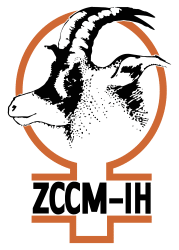By Tichaona Kurewa
Harare – The latest assessment of Zambia’s mining sector governance and investment attractiveness shows the Southern African country remains an appealing investment destination owing to its favourable geology, decades of mining history, political stability and low risk of expropriation, high levels of security; and a relatively favourable economic environment, the Mining Investment and Governance Review (MInGov) has shown.
MInGov’s development is led by the World Bank with the assistance of Adam Smith International (ASI) in collaboration with the African Centre for Economic Transformation (ACET), the Natural Resource Governance Institute (NRGI) and the Fraunhofer Institute.
The SADC member state has a long history of mining, which dates back to the colonial era and a large reserves of copper, emeralds and other mineral deposits. It also has a very good potential for further discoveries. Mining sector accounts for 12 percent of Zambia’s gross domestic product (GDP) and 70 percent of the total export value.
The sector is also a significant source of government revenue and formal employment, both directly and indirectly.
Continuing to attract investment in the sector is crucial to the country’s growth since it constitutes 62 percent of foreign direct investment. MInGov findings revealed that Zambia is a conflict-free nation making it more attractive to foreign direct investment.
“The country is an attractive place for investment due to favourable geology, its long history of mining, its political stability, and a relatively favourable economic environment.
Zambia is also safe and secure since the country’s independence in 1964 there has never been a war,” the report shows.
However, the same review also pointed out bottlenecks restraining the mining sector’s growth potential in that country.
“Priority areas for improvement include stability of its mining and fiscal policy; the development of domestic procurement policies; improved budget transparency; and frameworks for improved infrastructure development, particularly energy infrastructure,” it says.
“Integrating the mineral sector into national development planning is a crucial driver for sustainable development in Zambia.”
World Bank Country Manager for Zambia, Ina Ruthenberg, says more can still be done for the country to fully benefit from its mineral resources.
“Zambia is rich in minerals but we haven’t fully managed to convert that wealth for the benefit of the people,” says Ruthenberg.
“We need to know where to improve and what changes to make so we can harness this wealth to benefit not only current, but also future generations of Zambians.”
According to the review, the positive aspects of the Zambian mining sector are overshadowed by a lack of transparency and accountability regarding revenue management, a lack of consistency surrounding fiscal policy, and lack of support for diversifying the economy and leveraging of infrastructure for the general population.
MInGov gives government and regional public organisations access to policy and institutional analyses that affect the sustainable development of the mining sector, including its investment climate, effectiveness of public institutions in developing and monitoring the sector, as well as the costs and benefits to stakeholders.
Investors, mining companies and other companies in the sector benefit from access to country-specific, relevant governance data, policies and practices of governments that affect investment risk and decision-making in the sector.
Mining makes up a substantial part of the economies of many SADC countries and has the potential to deliver significant development benefits when managed in a holistic, sustainable manner. Responsible mining can lift people out of poverty by offering economic opportunity, jobs and training.
It generates tax revenues that governments can spend on services like health education, infrastructure and other social programmes.
The infrastructure can be shared with local communities to supply electricity and water as well as providing a robust road network.
Other SADC countries where mining is predominant include Botswana, Zimbabwe, Namibia and South Africa.
Source: The Southern Times
